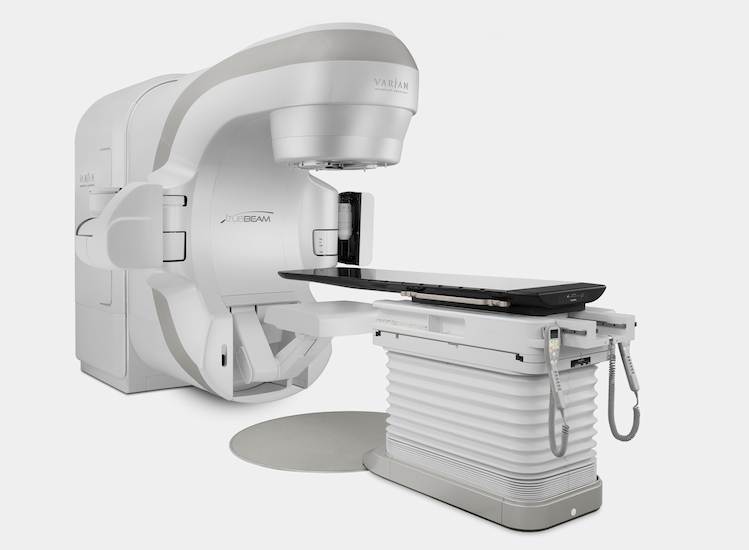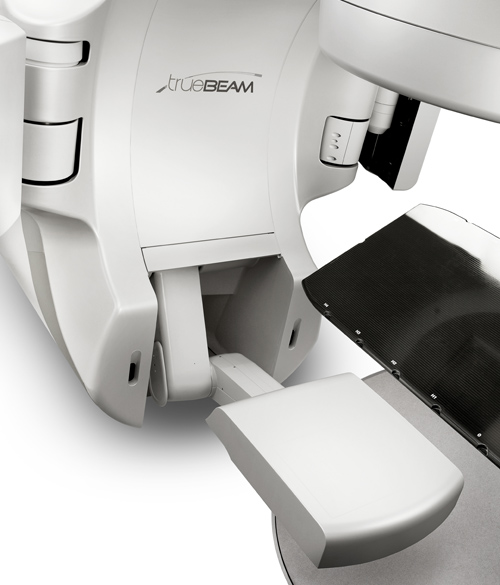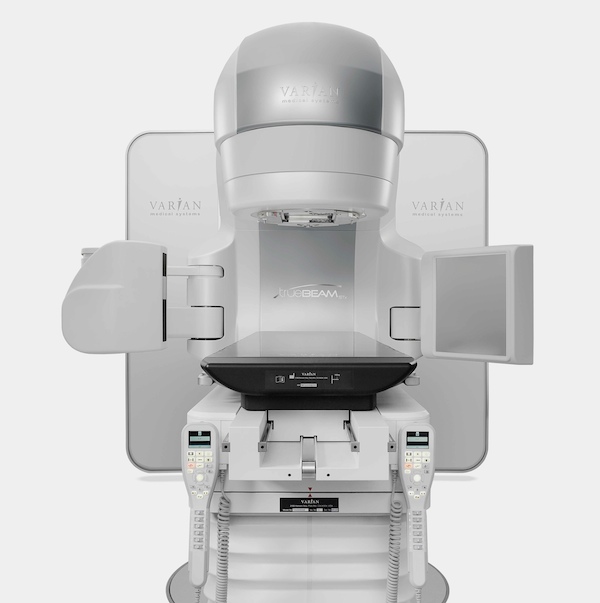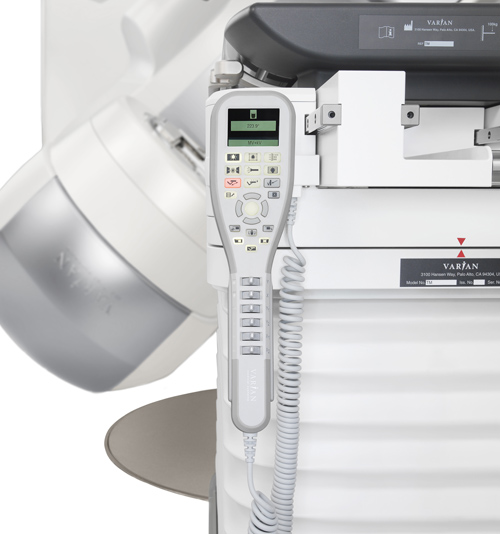
BMW Group DesignworksUSA had to figure that problem out when redesigning the Varian TrueBeam, a high-energy X-ray machine which treats tumors.
Some say that the best industrial design is invisible, and if you notice it, something's wrong. That's seems especially true with medical devices, which most people only encounter when... well, something's wrong. So when med-tech firm Varian wanted to redesign their line of high-energy X-ray machines (which are used to treat scary stuff like malignant tumors), they brought in the big guns at BMW Group DesignworksUSA. The result of their collaboration, the Varian TrueBeam, may not look much different at first glance from any other hulking piece of hospital equipment. But as with any effective industrial design, it's the details that matter most.

all images ©2010, Varian Medical Systems, Inc. All rights reserved.
The designers were constrained by the technology inside the TrueBeam -- no matter what kind of skin you put over a linear accelerator, it's going to be big (about the size of a 3-Series automobile tipped on its edge, according to BMW Group DesignworksUSA). But that skin hadn't been updated in about 25 years, says Dean Ryan, BMW Group DesignworksUSA Senior Project Manager. "The fit and finish of the fiberglass panels was improved with the use of pressure-formed plastic panels and the color scheme was updated from a combination of muted greys and blues and beiges -- typical older medical colors," Ryan tells Co.Design. "Our task was to give [the Varian TrueBeam] a geometry and color and texture that would be reassuring to patients who are feeling vulnerable, and at the same time make it more efficient for the RT to set up and run it as smoothly as possible."

That meant replacing the older, angular shapes of Varian's products with smooth curves and soft shapes "so all the surfaces seem flow in a way that looks organized -- both to the patient, who's about to get into the thing, and the radiotherapist, who has to use it," Ryan says. And the TrueBeam's white isn't just any old white: "There's a bit of mica in it, to give a quality of reflectivity, a little more presence."
It sounds hand-wavey, but this is the same kind of nano-attention to detail that Steve Jobs applies to an iPad. Besides obvious connotations of cleanliness and clarity, the designers needed a white that would be neutral enough to fit into any hospital, while looking like a trustworthy, ultra-precision tool. "When they're dealing with cancer, patients want to be reassured that they're entering into a process that's going to solve their problem," Ryan explains. Bonus: the white color actually makes the entire device appear smaller.


The Varian TrueBeam is actually two products under one name: one marketed to oncology departments with a lot of patient-facing interaction, and another meant for radiosurgery. BMW DesignworksUSA created subtle but distinct accents on each product to appeal to its primary users: "For the machine used in surgery, we made the curved surfaces slightly tighter and added silver accents to give it more of a sense of 'technical confidence,'" Ryan explains. "Meanwhile, the oncology device has matte titanium accents that are more about soothing softness, because patients are often going to be in there several times over the course of days or weeks."
Battling cancer is no easy task for patients or medical professionals, but thanks to the sensitive attention to detail by BMW Group DesignworksUSA, hopefully the experience can be a bit less arduous.
Nincsenek megjegyzések:
Megjegyzés küldése